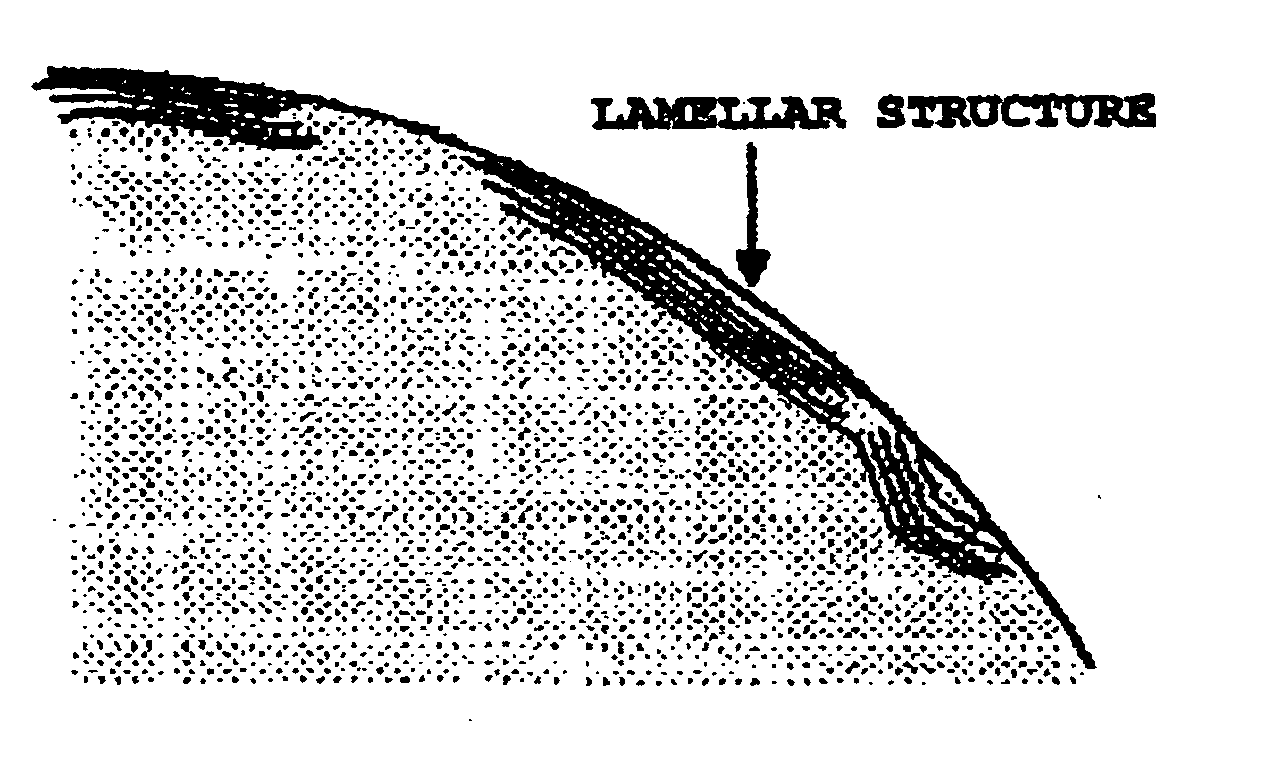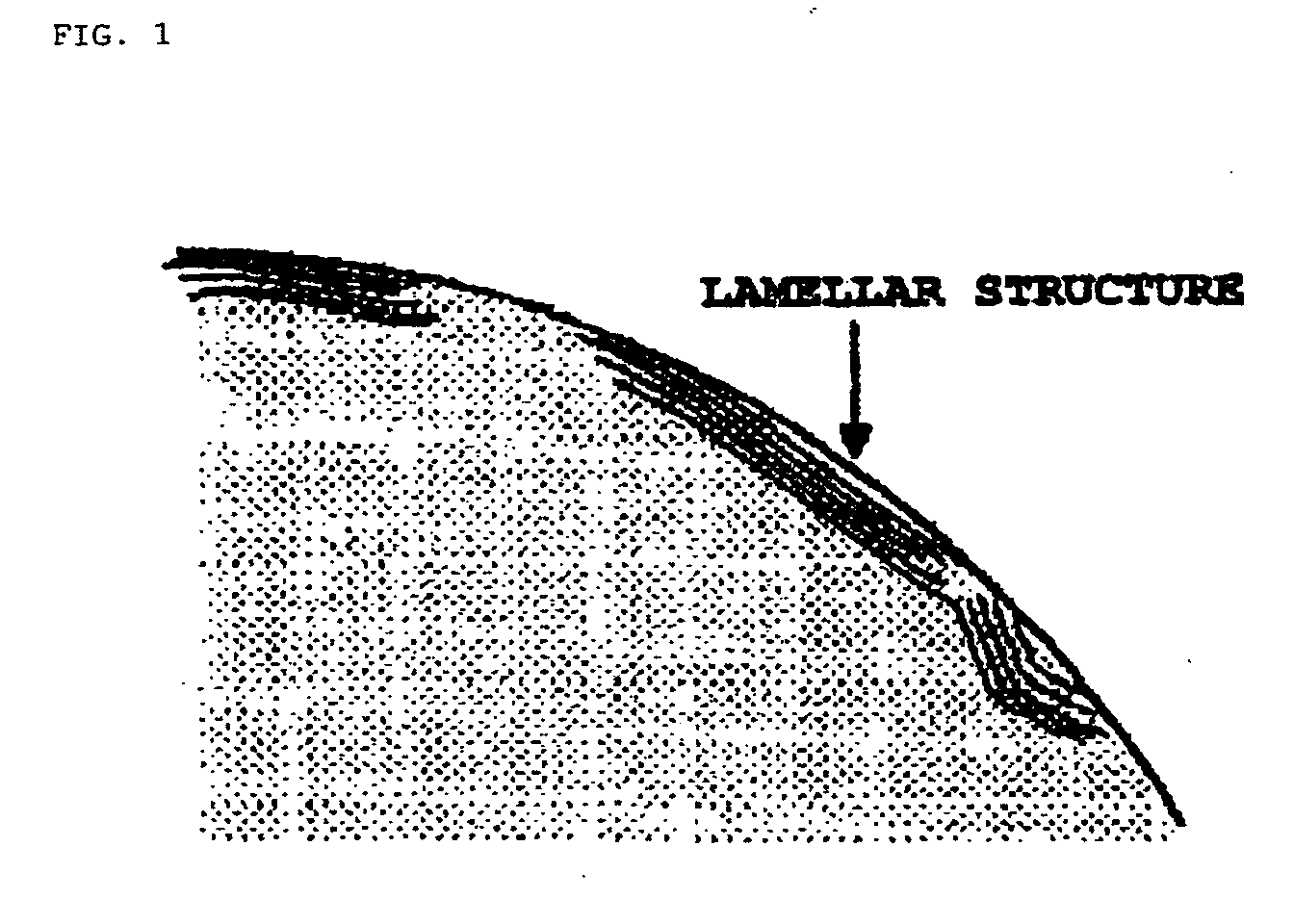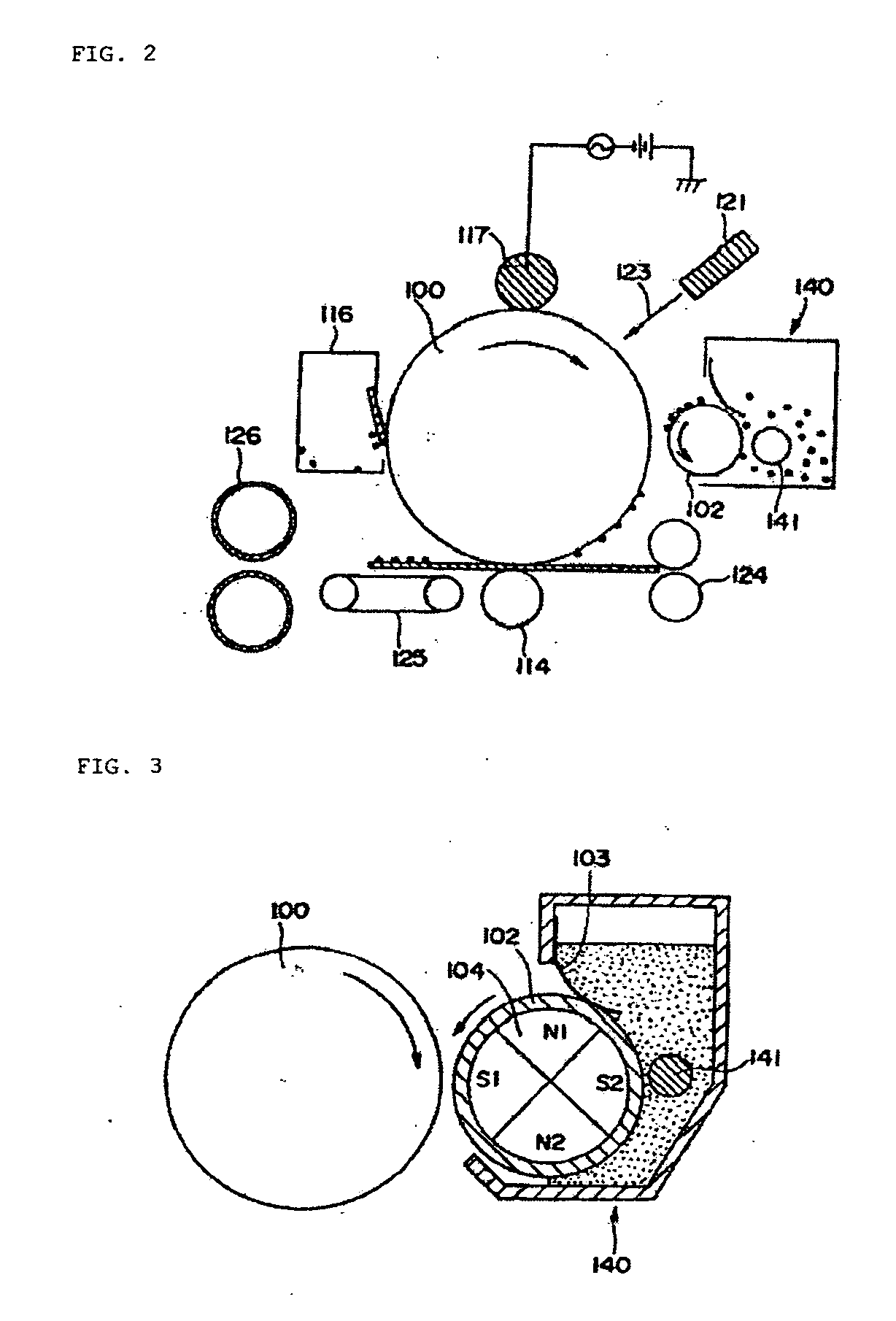Toner
- Summary
- Abstract
- Description
- Claims
- Application Information
AI Technical Summary
Benefits of technology
Problems solved by technology
Method used
Image
Examples
example 1
Production of Toner 1
[0217] 450 parts of a 0.1-mol / l aqueous solution of Na3PO4 were charged into 720 parts of ion-exchanged water, and the whole was heated to 60° C. After that, 67.7 parts of a 1.0-mol / l aqueous solution of CaCl2 were added to prepare an aqueous medium containing a dispersion stabilizer.
[0218] Meanwhile, the following formulations were uniformly dispersed and mixed by means of an ATTRITOR (manufactured by Mitsui Miike Machinery Co., Ltd.). The dispersed mixture was heated to 60° C., and 10 parts of paraffin wax (highest endothermic peak in DSC 78° C., Mn=500, Mw=660) were added to, mixed with, and dissolved into the mixture. 4.5 parts of 2,2′-azobis(2,4-dimethyl-valeronitrile) as a polymerization initiator were dissolved into the resultant to produce a polymerizable monomer composition.
Styrene74partsn-butyl acrylate26partsDivinyl benzene0.5partPolyester component 15partsPolyester component 85partsNegative charge control agent (T-771part(manufactured by Hodogaya...
example 2
Production of Toner 2
[0222] A toner 2 was produced in the same manner as in the production of the toner 1 except that: the polyester component 2 was used instead of the polyester component 1; and the reaction time after the temperature increase up to 90° C. was changed to 30 minutes.
[0223] The cross section of the toner 2 was observed by means of a TEM. As a result, each of the surface layer and inside of the toner was observed to have the lamellar structure of the added polyester. Table 2 shows the physical properties of the toner 2.
example 3
Production of Toner 3
[0224] A toner 3 was produced in the same manner as in the production of the toner 1 except that the polyester component 3 was used instead of the polyester component 1.
[0225] The cross section of the toner 3 was observed by means of a TEM. As a result, each of the surface layer and inside of the toner was observed to have the lamellar structure of the added polyester. Table 2 shows the physical properties of the toner 3.
PUM
| Property | Measurement | Unit |
|---|---|---|
| Temperature | aaaaa | aaaaa |
| Temperature | aaaaa | aaaaa |
| Temperature | aaaaa | aaaaa |
Abstract
Description
Claims
Application Information
 Login to View More
Login to View More - R&D
- Intellectual Property
- Life Sciences
- Materials
- Tech Scout
- Unparalleled Data Quality
- Higher Quality Content
- 60% Fewer Hallucinations
Browse by: Latest US Patents, China's latest patents, Technical Efficacy Thesaurus, Application Domain, Technology Topic, Popular Technical Reports.
© 2025 PatSnap. All rights reserved.Legal|Privacy policy|Modern Slavery Act Transparency Statement|Sitemap|About US| Contact US: help@patsnap.com



